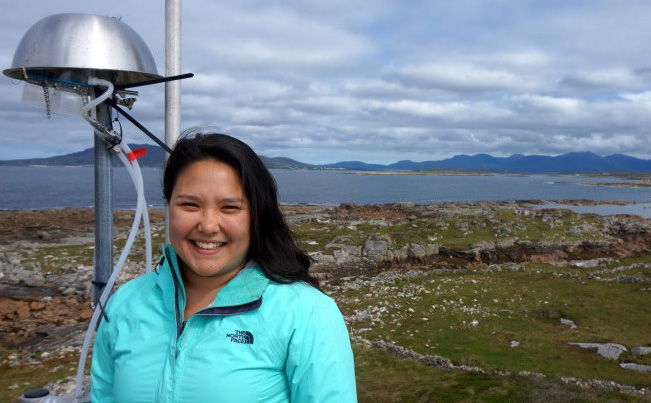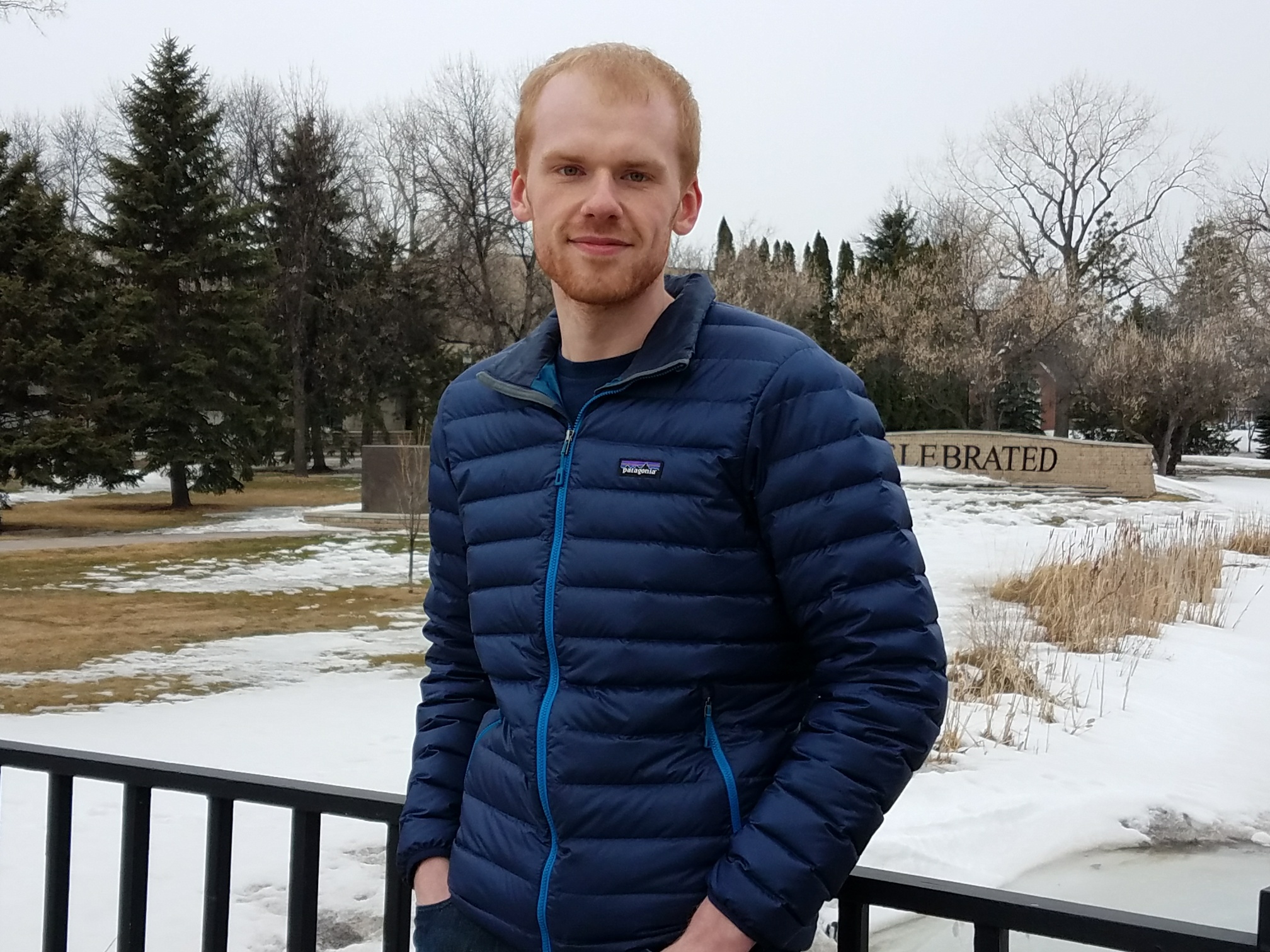U.S. Department of Energy Funding Opportunity Opens Doors for Graduate Students
Published: 15 April 2019
Applications Now Being Accepted for 2019 Solicitation 1
Since its inception in 2014, the U.S. Department of Energy (DOE) Office of Science Graduate Student Research (SCGSR) Program has been a source of world-class opportunities for up-and-coming researchers. It has funded over 410 graduate awardees from more than 120 U.S. universities to conduct thesis research at 18 DOE national laboratories/facilities.
The SCGSR program prepares graduate students for scientific and technical careers critically important to the DOE Office of Science mission. To do this, supplemental awards are given to outstanding U.S. graduate students to conduct part of their graduate thesis research at a DOE national laboratory/facility in collaboration with a DOE laboratory scientist for three to 12 consecutive months.
To date, this program has been immensely valuable to graduate students in the atmospheric sciences. The experiences of two recent awardees—Christina McCluskey of Colorado State University (CSU) and Mariusz Starzec of the University of North Dakota (UND)—demonstrate the impact of the program.
From University to National Lab

McCluskey was one of the 2016 SCGSR program awardees. She was sponsored by Sonia Kreidenweis and Paul DeMott of CSU and mentored by Susannah Burrows of Pacific Northwest National Laboratory (PNNL).
For three months in fall 2017, McCluskey worked with Burrows on assessing numerical predictions of ice nucleating particles (INPs) associated with sea spray. It was a good fit with her PhD topic, which focused on the uncertainties in earth system models regarding representations of aerosol-cloud interactions, particularly ice-phase transitions, in regions lacking terrestrial aerosol sources.
Before her work at PNNL, McCluskey’s studies included lab and field observations, so she was excited to collaborate with Burrows in translating these findings to the earth system model scale.
“DOE’s SCGSR program made it possible,” she says. “A parameterization developed from my PhD work can now be used to improve predictions of the number of available INPs in remote marine regions.”
At PNNL, McCluskey also gained skills in proposal writing, project planning, and working with a model. Further, she learned how working in a national lab differs from a university. Now her postdoctoral project focuses on modeling, using what she learned at PNNL.
“It‘s an exciting time to conduct research using both observational and modeling tools,” she says. “My transition between the two would have been far more difficult without the SCGSR program.”
To students hesitant to apply, McCluskey says: “If you and your host are invested in your project, your expectations will be exceeded. Besides learning more about modeling, I gained career experience, a broader professional network, a new mentor, and current and future collaborators.”
For their part, Kreidenweis and DeMott share the belief that SCGSR is remarkably productive. “Even applying for this award is beneficial, particularly developing and proposing a collaborative idea with someone new. Christina gained experience in a research skill—modeling—that was not otherwise part of her graduate program. We were excited that she had the opportunity to work with Dr. Burrows, a world expert and excellent mentor, and particularly pleased that her time at PNNL resulted in a tangible product that became a highlight in her dissertation, extending the implications of her lab and field data.”
Burrows called her experience working with McCluskey “very rewarding and productive.”
“We combined a unique observational data set she had obtained with a modeling approach I’d developed, allowing us to do some exciting new analyses,” says Burrows. “I also enjoyed training Christina in running models and using model output. In our field, there are often disconnects between the observational and modeling communities; this program encourages students seeking opportunities to understand both.”
She adds: “It offers a chance for young atmospheric scientists to gain new skills and perspectives, as well as to expand their professional networks and build collaborative relationships with DOE scientists.”
The Fascinating Power of Thunderstorms

Another 2016 SCGSR awardee was Starzec, who was sponsored by Gretchen Mullendore of UND and mentored by Mike Jensen of Brookhaven National Laboratory (BNL).
As a child, Starzec was both fascinated and scared by the weather. Lightning generated in severe thunderstorms had struck his house, uprooted trees, and burned down the family barn. Yet curiosity eventually led him to research focused on the dynamics and modeling of thunderstorms, which brought him to the SCGSR program.
In the fall of 2017, Starzec worked at BNL with the Cloud Processes Group, which specializes in observations of clouds and thunderstorms.
“I was instantly integrated into the research group and included in all their activities,” says Starzec. “My project involved analyzing three-dimensional thunderstorm data collected by several radars and developing idealized models to investigate how air interacts with the core of thunderstorms. It was great working with data from different observations platforms and combining it with classroom theory. From the connections I made with researchers, I was invited to help out in a DOE-led field campaign in the Azores, and I continue to collaborate with these researchers.”
Mullendore, Starzec’s PhD advisor, believes that the SCGSR program offers a unique opportunity for students—particularly those from smaller or remote graduate programs—to experience a large lab environment and collaborate with top DOE scientists. She says this collaboration benefits both the student and the home university.
“I’m confident,” Mullendore predicts, “that Mariusz’s collaboration with Brookhaven National Lab will lead to years of fruitful collaboration between the University of North Dakota and DOE, as part of Mariusz’s dissertation research and well beyond.”
Starzec’s mentor, Jensen, says: “Having Mariusz work with us was beneficial to him and our group at BNL. He got to apply analysis techniques and modeling to state-of-the-art measurements from the Atmospheric Radiation Measurement (ARM) Facility. Our group was involved in the field campaigns and new retrievals that were directly applicable to Mariusz’s dissertation research. He worked with the scientists using these same observations to gain insights into important atmospheric processes.”
Jensen adds: “Mariusz helped by challenging and testing our analysis techniques while gaining experience, extending his research, and learning about the lab environment. As he applies the results to finishing his PhD, I expect he’ll have impactful results, several publications, and ongoing collaboration with our group.”
How You Can Be Next
The SCGSR program is now accepting applications for 2019 Solicitation 1. Applications are due at 5 p.m. Eastern time Thursday, May 9, 2019. Detailed information about the program, including eligibility requirements and access to the online application system, can be found at https://science.energy.gov/wdts/scgsr/.
The program is open to current PhD students in qualified graduate programs at accredited U.S. academic institutions who are conducting their graduate thesis research in targeted areas of importance to the DOE Office of Science. The research opportunity is expected to advance the graduate students’ overall doctoral thesis/dissertation while providing access to the expertise, resources, and capabilities available at the host DOE laboratories/facilities.
The Office of Science expects to make approximately 50 awards in the 2019 Solicitation 1 cycle, for project periods beginning anytime between October 28, 2019, and March 2, 2020. Benefits include a stipend of up to $3,000 per month and traveling expenses of up to $2,000 to and from the host lab/facility.
Keep up with the Atmospheric Observer
Updates on ARM news, events, and opportunities delivered to your inbox
ARM User Profile
ARM welcomes users from all institutions and nations. A free ARM user account is needed to access ARM data.


















